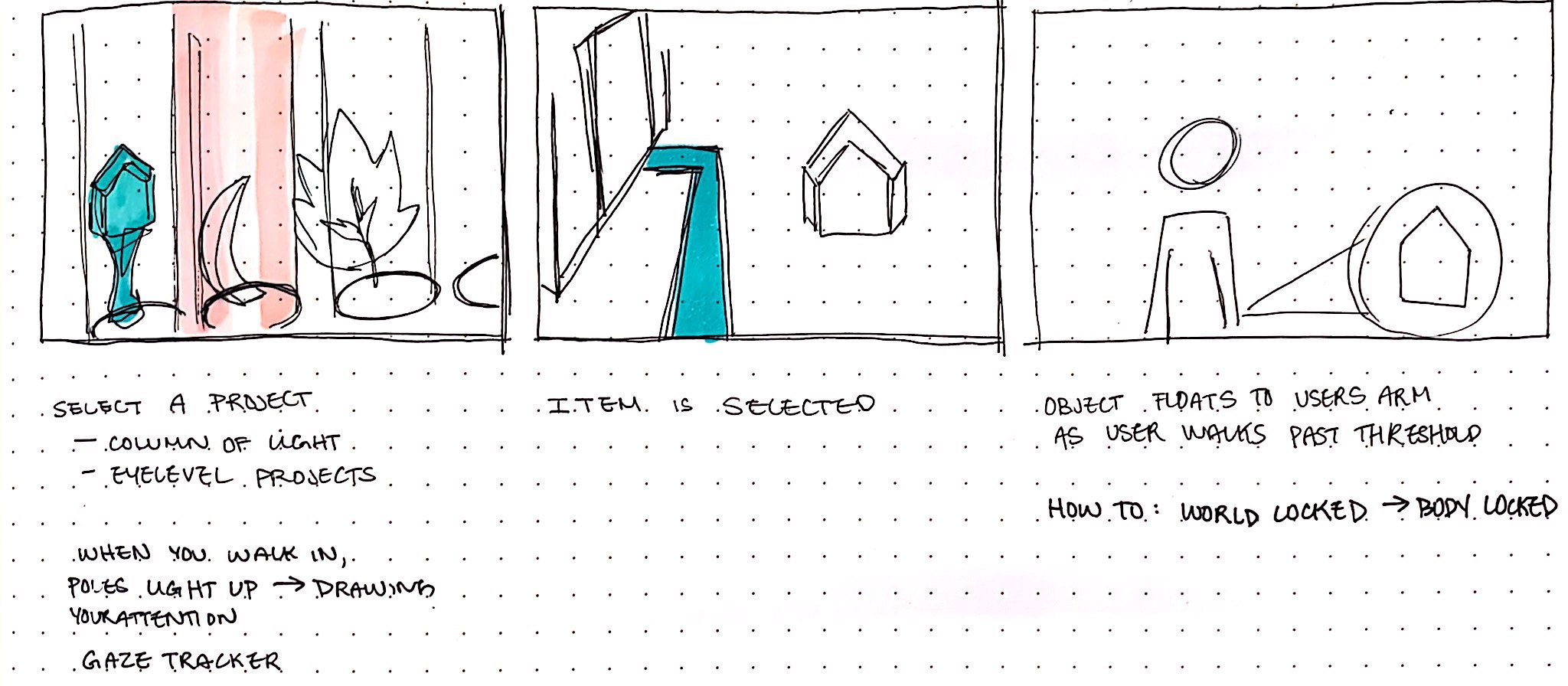Carnegie Mellon University (CMU) campus tours are meant to give visitors a brief look into the campus culture and what a student's life looks like. In this project, I was tasked to envision a campus tour ten years into the future where HoloLens, a headset meant to augment reality, has become ubiquitous. The current tour gave visitors a general sense of what CMU has to offer, but I realize does not go into immense detail with any one stop as there are many places a tour guide needs to hit in less than an hour.
| Individual | |
| Duration | Fall; 2 weeks |
| Medium | Video prototype |
| Tools | Prototyping, Personas, AfterEffects |
Because I am designing a tour for prospective students and parents alike, I wanted to get a sense of what the visitor's expectations could be and have a general idea of my target audience. As such, I created three personas of the types of people I am targeting in this project:
After putting down my general ideas, I created three personas of what I thought could be the types of visitors on this tour. Then I began to look at some ideas that could fit their accommodations.
I outlined basic steps of the entire tour with the usage of HoloLens. After storyboarding my ideas, I began to hone in on which ideas fit in line with the expectations and concerns of my personas so I can develop those.
From going on the current tour, I wanted my main takeaway to be understanding in CMU's educational culture; rather than simply given facts about student projects and abilities, I wanted visitors to see how students work, where they can do this, and of course, their projects
The space that I chose is the Integrative Design, Arts, and Technology (IDeATe) lab. What I immediately noticed about this space is that there was already a way-finding system in place; in order to use HoloLen's full capabilities in an augmented reality, I wanted to utilize this in my redesign.


By displaying real student projects as a hologram in augmented reality, visitors are pushed to see what can be done at this university. Furthermore, by doing this in the actual collaborative space, visitors are able to see the process of which projects were created as well.

An important piece of this project was how I wanted the users to actually interact with the HoloLens and the space. In thinking that the visitors would be as familiar with this headset as we are with our phones, I imagine there to be conventional gestures that are used across apps (similar to a swipe down for refresh, hamburger menu for navigation, and so on).
I storyboarded what I imagined the interactions would look like, taking into careful consideration of how these gestures would play into the physical world; for example, how do I keep in mind that there may be other students in the space at this time?
Some gestures/interactions that I initially prototyped but ultimately discarded were placing little “disks” around the IDeATe space so that visitors could open them up and view the projects that were worked on here (bottom row of above image). However, this interfered with students who were using the space so I decided to remove this idea from the physical space, but kept the gestures used.
In the end, however, I adjusted my idea so that any project that would be shown to a visitor would only be on standby at the initial entrance, rather than scattered across the collaboration space.
IDeATe already has it’s own wayfinding system, but it is only intuitive if a visitor knows what each room does.